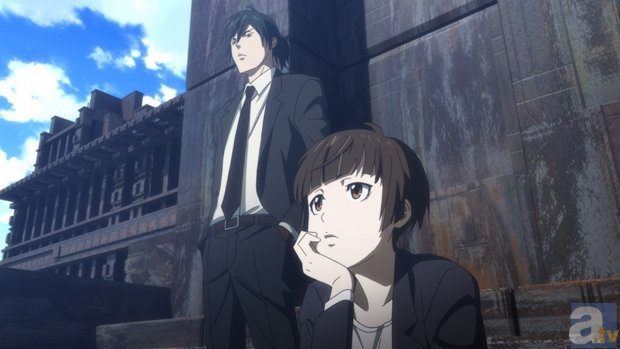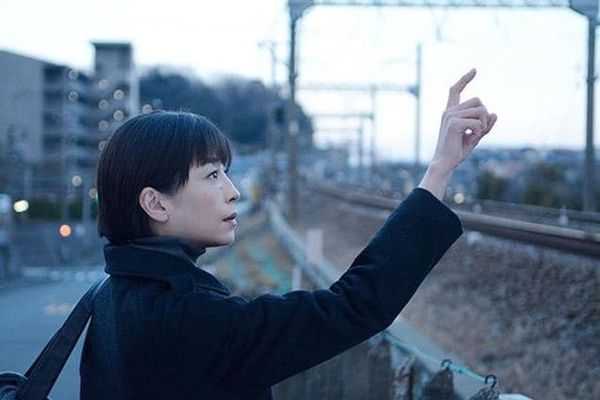Kumiko, The
Treasure Hunter:
Written by Nathan and David Zellner, directed by David Zellner. Starring:
Rinko Kikuchi, Nobuyuki Katsube, Kanako Higashi, Kyokaku Ichi, Ayaka Onishi,
and David Zellner. Running Time: 105 minutes.
Rating: 3.5/4
For years, there was an urban legend
floating around the internet and the fringes of Cinephilopolis that Fargo, the Coen brothers classic from
the 1990’s that jokingly claimed to be based on a true story, may have inadvertently
killed someone. A Japanese woman named
Takako Konishi was found dead near a lake in Minnesota in 2001, and it was soon
rumored that, tricked by the movie’s opening credits, she had gone there to
hunt for the suitcase full of cash buried in the ice by Steve Buscemi in one of
the movie’s final scenes.
This, of course, turned out to be completely
false (the death the legend refers to was ruled a suicide, and there is no
evidence she ever even knew of the film), but it’s still stuck around as a
curious bit of cinematic pop quiz material for those interested in such
minutiae. Now, however, an American
director (David Zellner, who appears in the movie in a late supporting role)
has taken the bare bones of the urban legend, right down to Takako’s origins
working for a travel agency and a confused misunderstanding with a local police
officer, and reworked them around one of the most fascinating “what-if”
premises for a movie I’ve heard of in some time- what if there really WAS
someone fooled into thinking Fargo
was real?
Roughly the first half of the film
is spent introducing us to the almost amusingly pathetic daily life of Kumiko
(played by Rinko Kikuchi). It’s an
almost too-standard picture of a person feeling their age, life, and career
prospects spinning out of control- her boss is overbearing, regularly demanding
to know why Kumiko is not actively applying for advanced positions within the
company, and both he and her mother ask her astonishingly probing questions
about whether or not she’s dating someone, or if she even has any interest in
marriage or kids. All her friends seem
blissfully (and to Kumiko, horrifyingly) content with their very standard, average
lives. Her only real interests seem to
be caring for her adorable pet rabbit (who later gets what is probably the most
emotional scene in the entire film) and hunting down lost items with strange,
obscure treasure maps.
The very first scene is one such
hunt, where Kumiko delves into a small cave near the shore and finds a
beaten-up, VHS copy of Fargo, dubbed
into Japanese. Who left it there? What purpose was served by burying it and
then making a map showing where to find it?
How did Kumiko even get her hands on such a curious item? Or did she just swipe the video from the
local rental store and fantasize that she found it as part of an epic beach
hunt?
I suspect any answers to these
questions are ultimately immaterial- she now has the movie, and that’s all that
matters. She watches and rewatches it
over and over again after work, clearly becoming more and more convinced with
each viewing that the treasure buried by Buscemi is real, and that she- and
only she- has the cleverness and wherewithal to sniff it out. And when events in her life push her just a bit
too far over the edge, she makes what seems to be the first real choice of
consequence she’s made in her life in years, and throws everything she has,
both materially and mentally, into tracking down the briefcase.
It should quickly become obvious to
most viewers that Kumiko is, at best, manically depressed, and at worst,
completely unhinged from reality. Her
first stabs at determining the location of the treasure come off as adorably quirky,
or even humorous (a shot showing how she tries to steal a map of the US from a
library got more than a few belts of laughter from the audience I was
with). In some ways, she’s not unlike
many of the psychologically lost souls populating most of the Coen brother’s
works. But once she actually goes through with a terribly-thought-out plan and
finds herself stranded in the Midwest without so much as a proper winter coat, the
very real- and very terrifying- consequences of her actions hit home fast and
hard.
At that point, a little more than
halfway through the film, we are suddenly transported out of the rather darkly-zany
world Kumiko has left behind and find ourselves in a David-Fincher-esque world of
howling darkness. Any marginally sane
person would realize their failure at this point and give up, but not Kumiko-
she just keeps going. And the more lost
she gets, the more bizarrely fascinating it is to see just how deep Kumiko is
willing to sink in order to satisfy her sadly twisted belief that this, and
only this, can give her life value. We
know how it will end- since many people that see this movie will likely know
the legend, it’s easy to think that the movie will ultimately be too
anti-climactic to be worth seeing- but in this particular case, the power of
the movie comes not through a twist of the story, but in how it brings us to
its inevitable conclusion. We feel
compelled to keep watching just to see what Kumiko will think of next. Once you think she’s pulled the most insane
stunt she possibly could, she goes out and does something even more
off-the-wall-bonkers, a never-ending cycle of descending madness.
Rinko Kikuchi first broke into
popular American consciousness with her role in the summer megahit Pacific Rim a few years ago, but
it’s here that her powers as an actress are put on full display. Hers is already one of my favorite
performances of the year, in some ways mirroring Charlize Theron’s amazing turn
as Furiosa in Mad Max: Fury Road- her
expression and tone of voice almost never change, but there’s so much
frustration and pain etched into every line of her face that it doesn’t
matter. She simply glances at something
(or someone), and no words are needed. She
anchors the entire film, and gives it the tragic edge it needs to veer into the
abyss of the final act.
Anyone expecting (or perhaps
wanting) Kumiko to be a compendium of
clever references to or quotes from the original film, or who go in planning a
drinking game around how many times someone says, “You betcha,” will leave disappointed-
at no point does Zellner try to ape either Fargo
itself or any other Coen brothers works, which ends up being very much to the
film’s benefit. Only the Coen brothers
can pull off the Coen brothers, and Zellner was wise to keep the focus of the
film tightly on Kumiko and to utilize his own style. It’s not a style that will work for all- the
ending is sure to confuse, frustrate, or infuriate a good number of people who
see the film (although I found it to be brilliant), and there are perhaps some
arguments to be made that the way Kumiko’s agonizingly normal life in Japan is
set up is a bit by the books. No
matter. Kumiko, The Treasure Hunter is a great film from start to finish,
and made for a properly fitting ending to this year’s Nippon Connection. I can’t wait until next year.
-Noah
Franc





